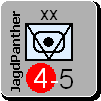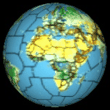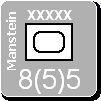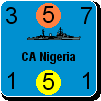Yes. The tutorial on naval units (#5) is just to introduce them to the reader. Moving naval units wasn't covered in much detail and combat not at all. My intent is to have the tutorials layer the knowledge. By that I mean to give vague hints about stuff early (e.g., invasions) and later cover it in more detail. Somewhere I explained this earlier. The idea is to not try to cover everything in perfect detail at the first go, but to let the reader acquire a firm foundation of the basics and then build upon that with more information/knowledge later.ORIGINAL: michaelbaldur
yes ..... but maybe another tutorial ...... an advanced combat .... .invasions shorebombardmnet... weather ....notorial ....advanced naval combat
Tutorial #5 - Naval Units
Moderator: Shannon V. OKeets
-
Shannon V. OKeets
- Posts: 22165
- Joined: Wed May 18, 2005 11:51 pm
- Location: Honolulu, Hawaii
- Contact:
RE: Tutorial #5 - Naval Units
Steve
Perfection is an elusive goal.
Perfection is an elusive goal.
- Zorachus99
- Posts: 789
- Joined: Fri Sep 15, 2000 8:00 am
- Location: Palo Alto, CA
RE: Tutorial #5 - Naval Units
I strongly recommend one of Patrice's excellent sequence of naval movement possibilities as a tutuorial. [&o]
1) Moving from port to port to sea (illustrates the concept).
2) Port to land (land movement illustration)
3) Port to Land movement to Paradrop (include an example of paratroop combat against a 1 pt notional unit from an in supply hex?)
It's the most extreme example, all other movements are variations on this action.
1) Moving from port to port to sea (illustrates the concept).
2) Port to land (land movement illustration)
3) Port to Land movement to Paradrop (include an example of paratroop combat against a 1 pt notional unit from an in supply hex?)
It's the most extreme example, all other movements are variations on this action.
Most men can survive adversity, the true test of a man's character is power. -Abraham Lincoln
RE: Tutorial #5 - Naval Units
This sort of relates to AI as well as tutorials
Optimal strategies for resolving damage from naval combat ? will the AI have a simple fixed one say cruisers then BBs then CVs or will a more subtle strategy be applied?
will this be country/current strategy dependant? eg CW can afford to take more losses if it means sending the expensive and slow to rebuild italian navy to the bottom of the med
Optimal strategies for resolving damage from naval combat ? will the AI have a simple fixed one say cruisers then BBs then CVs or will a more subtle strategy be applied?
will this be country/current strategy dependant? eg CW can afford to take more losses if it means sending the expensive and slow to rebuild italian navy to the bottom of the med
We're here for a good time not a long time!
-
Shannon V. OKeets
- Posts: 22165
- Joined: Wed May 18, 2005 11:51 pm
- Location: Honolulu, Hawaii
- Contact:
RE: Tutorial #5 - Naval Units
Yes.ORIGINAL: Zorachus99
I strongly recommend one of Patrice's excellent sequence of naval movement possibilities as a tutuorial. [&o]
1) Moving from port to port to sea (illustrates the concept).
2) Port to land (land movement illustration)
3) Port to Land movement to Paradrop (include an example of paratroop combat against a 1 pt notional unit from an in supply hex?)
It's the most extreme example, all other movements are variations on this action.
I want this to be an 'Interactive' tutorial.
Right now I am unsure how those will work. The main idea is to enable the player/learner to pick up a unit and move it. Writing code explicitly to enable this is unattractive; I would prefer to use the 'regular' code . On the other hand, the standard code has a lot of other stuff that is possible and I don't want the player wandering off to try a bunch of unusual things. How much control to exert versus how much freedom to permit is the question (sort of like raising kids I guess).
Steve
Perfection is an elusive goal.
Perfection is an elusive goal.
RE: Tutorial #5 - Naval Units
I have never played the game. Tonight I looked at the first post in this thread. I see that the movement points and the range are 2 of the variables on the counters.
I would have thought both figures are redundent.
Click on unit. The hexes it can move to remain normal colour the hexes it cannot move to are darkened.
What is the purposse of the movement points and the range?
I would have thought both figures are redundent.
Click on unit. The hexes it can move to remain normal colour the hexes it cannot move to are darkened.
What is the purposse of the movement points and the range?
RE: Tutorial #5 - Naval Units
ORIGINAL: Joe 98
I have never played the game. Tonight I looked at the first post in this thread. I see that the movement points and the range are 2 of the variables on the counters.
I would have thought both figures are redundent.
Click on unit. The hexes it can move to remain normal colour the hexes it cannot move to are darkened.
What is the purposse of the movement points and the range?
They're a holdover from the board game and have a sentimental appeal for me as a result. They're still handy because they give an indication of movement potential at a glance, without having to click on the unit.
Cheers, Neilster
Cheers, Neilster
RE: Tutorial #5 - Naval Units
The range is how far the unit can travel, and the speed is, given how far it has travelled, how efficient is it at patrolling the sea area it is in.ORIGINAL: Joe 98
I have never played the game. Tonight I looked at the first post in this thread. I see that the movement points and the range are 2 of the variables on the counters.
I would have thought both figures are redundent.
Click on unit. The hexes it can move to remain normal colour the hexes it cannot move to are darkened.
What is the purposse of the movement points and the range?
As Neilster said, they give an indication of movement (and I'd add 'Combat') potential at a glance, without having to click on the unit, and this is very good once you're used to it.
-
Shannon V. OKeets
- Posts: 22165
- Joined: Wed May 18, 2005 11:51 pm
- Location: Honolulu, Hawaii
- Contact:
RE: Tutorial #5 - Naval Units
Sea areas are very large so a naval unit that can move 4 sea areas could start in Plymouth and be moved to the Eastern Mediterranean. Highlighting possible sea area moves isn't very helpful because you would have to be zoomed way out to see all the possible moves.ORIGINAL: Joe 98
I have never played the game. Tonight I looked at the first post in this thread. I see that the movement points and the range are 2 of the variables on the counters.
I would have thought both figures are redundent.
Click on unit. The hexes it can move to remain normal colour the hexes it cannot move to are darkened.
What is the purposse of the movement points and the range?
The range and movement point for the naval units is an awkward system. I would have preferred the terms range and patrol bonus, where the patrol bonus is the movement points - range. [The movement points are always equal to or greater than the range.]
In practice a naval unit can move as many sea areas as its range. Once it arrives in a sea area, its ability to patrol the area is determined by which sea box section it occupies. And its choice of sea box sections is limited by its unused range + the patrol bonus.
WIF uses the terms range and movement points with the choice of sea box section limited by the unit's unused movement points.
This is another reason why simply highlighting sea areas the unit can reach is incomplete information. Instead it would be better to highlight the sea section boxes the unit can occupy. Still, these would be spread out over a large area of the map and only visilble in their entirety if the zoom level were very small.
Steve
Perfection is an elusive goal.
Perfection is an elusive goal.
- composer99
- Posts: 2931
- Joined: Mon Jun 06, 2005 8:00 am
- Location: Ottawa, Canada
- Contact:
RE: Tutorial #5 - Naval Units
WiF and MWiF do not use hex-based movement for naval units or for aircraft patrolling at sea. Instead, they use a combination of sea areas and, within each area, sea boxes. Sea areas are used for strategic naval movement, and sea boxes for tactical operations (namely, combat, but also invasions).
A naval unit's range tells you how many sea areas it can move through during a naval move. It's movement tells you how far up the sea box (from 0 to 4) it can go once it gets there. Moving through a sea area or port costs 1 range & 1 movement. Moving up a box costs 1 movement.
With the combination of moving through and into sea areas & ports, and then moving through sea boxes when in a sea area, highlighting potential destinations would probably get a little cumbersome.
Until you've manipulated a few naval units making naval moves, it's hard to get a feel for how it works. I suspect this explanation may have you getting a little [>:]. Goodness knows that's what I'm doing writing it. [:)]
A naval unit's range tells you how many sea areas it can move through during a naval move. It's movement tells you how far up the sea box (from 0 to 4) it can go once it gets there. Moving through a sea area or port costs 1 range & 1 movement. Moving up a box costs 1 movement.
With the combination of moving through and into sea areas & ports, and then moving through sea boxes when in a sea area, highlighting potential destinations would probably get a little cumbersome.
Until you've manipulated a few naval units making naval moves, it's hard to get a feel for how it works. I suspect this explanation may have you getting a little [>:]. Goodness knows that's what I'm doing writing it. [:)]
~ Composer99
-
Shannon V. OKeets
- Posts: 22165
- Joined: Wed May 18, 2005 11:51 pm
- Location: Honolulu, Hawaii
- Contact:
RE: Tutorial #5 - Naval Units
A short answer for naval range and movement points is that big numbers are good and small numbers are bad.
Steve
Perfection is an elusive goal.
Perfection is an elusive goal.
RE: Tutorial #5 - Naval Units
ORIGINAL: composer99
WiF and MWiF do not use hex-based movement for naval units or for aircraft patrolling at sea.
Not bad, but you forgot about LND's which can use a coronation of hex and hex dot movement to determine which section of sea box they can be placed in.
11.3 Naval air missions
How to fly a naval air mission
To fly a naval air mission into a sea area, fly the aircraft from its base to any hex-dot in a sea area. Put the aircraft into a section of the sea-box in that sea area. If it has no movement points left after flying to the hex dot, it can only go into the 0 section. If it has 1 unused point, it can go into either the 0 or the 1 section. If it has 3 points left (i.e. 1+2), it can go into the 0, 1 or 2 section. If it has 6 points left (i.e. 1+2+3), it can go into the 0, 1, 2 or 3 section. And, if it has 10 or more points left it can go into any section.
14.4.1 Carrier plane units (CVPiF & SiF option 56)
Carrier planes as aircraft
A carrier plane can fly a mission from a hex just like any other aircraft. Treat it as a FTR if it flew as a fighter and as a LND if it flew as a bomber. If it hasn’t yet decided its role (i.e. it is in a sea area), it has the effects of a LND.
- Zorachus99
- Posts: 789
- Joined: Fri Sep 15, 2000 8:00 am
- Location: Palo Alto, CA
RE: Tutorial #5 - Naval Units
ORIGINAL: Shannon V. OKeets
I would have preferred the terms range and patrol bonus, where the patrol bonus is the movement points - range. [The movement points are always equal to or greater than the range.]
I like this very much. The patrol bonus refers to the time and activity level the ship can perform at in the sea area before returning to base. Changing wording at this point is probably beyond the effort; but kudos to you for using language that more succinctly phrases the action.
Most men can survive adversity, the true test of a man's character is power. -Abraham Lincoln
- composer99
- Posts: 2931
- Joined: Mon Jun 06, 2005 8:00 am
- Location: Ottawa, Canada
- Contact:
RE: Tutorial #5 - Naval Units
ORIGINAL: Mziln
Not bad, but you forgot about LND's which can use a coronation of hex and hex dot movement to determine which section of sea box they can be placed in.
But think of the poor newbie! [;)] Naval movement is a big enough subject on its own without adding in naval air movement as well. That would probably have its own tutorial in any case, and the two concepts would meet in that space where naval and air units interact the most: in battle (aka the Naval Combat Tutorial)!

~ Composer99
-
Shannon V. OKeets
- Posts: 22165
- Joined: Wed May 18, 2005 11:51 pm
- Location: Honolulu, Hawaii
- Contact:
RE: Tutorial #5 - Naval Units
Here is a new page (it goes last) for the naval units tutorial. In RAW this is section 28.


- Attachments
-
- Tut51401202008.jpg (189.91 KiB) Viewed 196 times
Steve
Perfection is an elusive goal.
Perfection is an elusive goal.







